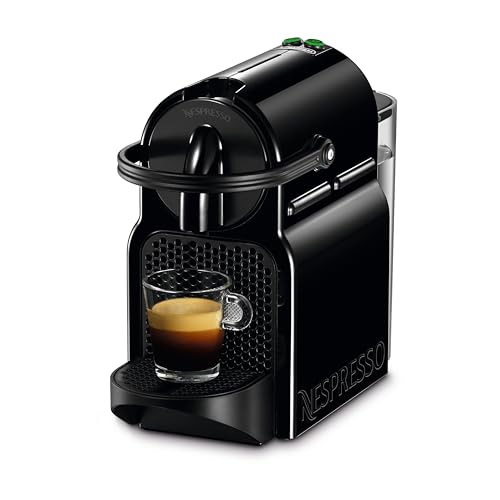
Coffeee
Add a review FollowOverview
-
Sectors Construction / Facilities
-
Posted Jobs 0
-
Viewed 379
Company Description
The 10 Most Terrifying Things About Coffee Machine For Home
Buying a Coffee Machine For Home
If you decide to purchase a coffee machine for home it’s worth investing in accessories such as the tamping mat as well as a set of coffee scoops. You’ll need to stock your milk and beans.
This semiautomatic combines milk frothers with the user-friendly assisted dosing feature and tamping of the 2022 Barista Touch Impress for a sleek setup that will take the coffee you make at home to new levels. It’s also smart, as it connects to Alexa and utilizing geofencing technology.
Filter coffee machines
Filter machines are among the most used coffee makers for home use. They heat water, and then allow it to pass over ground coffee before returning it to the pot. This creates an extremely smooth and strong concentrate which is then diluted in a separate carafe. They are easy to use and usually include a large glass vessel that can accommodate a number of cups. This is ideal for families or groups of friends. They are cheaper than other models. This makes them an ideal choice for those who are on a tight budget.
The majority of models have a compartment for the ground coffee, and an upward-facing tube from the bottom. The water is heated with an element that resists heat, and then dripped over the coffee grounds and into the pot. The reservoir typically holds a large amount of water, and it can be refilled to keep the cycle going.
Many coffee makers feature an one-way valve which prevents the cold water from mixing with the heated water. This decreases energy use and helps keep the water warm for a longer amount of time. The machines are also fitted with a metal heating plate which helps keep the water warm for a long time.
If you are using an automatic filter it is necessary to measure your preferred amount of coffee into the filter, and then begin the coffee brewing process. Most of these coffee makers require a ratio of approximately two tablespoons of ground coffee for each six ounces of water, but it’s best to verify the instructions of the manufacturer before choosing a particular ratio.
After you’ve added the ground coffee and water to the tank, it’s a good idea to let it sit for a couple of minutes to allow the coffee to expand and bloom and the beans release their flavor and aroma. Then, add the rest of the water in a circular motion, over the grounds of coffee, and then allow the brewing process to complete.
Like other coffee machines filter coffee makers may occasionally experience issues. Cleaning them regularly is important to prevent the formation of hard water and other contaminates that can block tubes and impair the taste of coffee. Most of the components are dishwasher-safe, so cleaning should be simple and quick. It is important to clean the tube that connects the aluminum heating tube to the cold-water pipe regularly. If you’re having trouble with your coffee maker, it might be worthwhile to run vinegar through the machine before attempting any more serious repairs.
Espresso machines
Espresso is a well-loved coffee drink. It has seen a huge boom in the past decade. There is an espresso machine in almost every cafe or restaurant and many enjoy brewing up their own at home. While the machines at home are not as large and powerful as those found in restaurants, they function with the same basic principles. You can master the brewing process to create a variety of espresso drinks.
A basic at-home espresso machine includes a heating vessel as well as a portafilter container and a steam valve. The machine will heat the water to the perfect temperature to make espresso when you switch it on. Once the water is heated you can pour your coffee in the basket and then tamp down. Then, you’ll add a filter and the portafilter lid to the machine, and then push the water through the coffee grounds using the pump. The water pressure that is created by pushing the grounds through produces a strong espresso. You can then add milk to your drink to create a cappuccino, macchiato, or latte.
If you’re planning to make cappuccinos or lattes, you may also want to consider purchasing a milk frother. Also, ensure that you have espresso cups as well as a cleaning brush for your machine. It is also possible to require a tamping mat for your portafilter.
You can utilize your espresso machine to make other types of coffee, too. However, you should be aware that the process can take longer and that your results will be less than optimal. Use a coffee labeled as espresso for the best results.
The size of the boiler as well as the pressure level in your machine can impact the way your drinks taste. In general, larger machines have larger boilers that will make more drinks in a shorter amount of time. They also make espressos that are more intense with more pressure.
Some machines feature an automatic piston and spring design that allows you to control the force with which you push the water through the grounds. This allows you to pull espresso with the desired consistency and strength. Modern machines utilize electric pumps with rotating vein technology instead rotary valves to achieve the desired flavor and consistency. These are called semi-automatic espresso machines. They offer a little more control for the barista at home than automatic machines but still do not allow you to alter every aspect of the brew just like you would on an espresso machine that is professional. They are nevertheless easy to use and can produce excellent coffee.
Bean-to-cup machines
Like its name suggests, a bean-to-cup machine is an espresso maker with an integrated grinder and a crucially important part called the brewing unit. When you press a button the grinder will grind and tamp your chosen beans, the brewing unit will then heat water to brew them when the coffee is brewed, the used grounds are automatically ejected from an internal waste bin. you can also add milk if you like.
Many bean-to-cup machines have a self-cleaning mechanism which basically flushes through hot water after every use, making sure that the coffee residue doesn’t accumulate in the pipes during full cleans which are usually required every few months. This is a great feature if you drink a lot of coffee and want to keep the machine as clean as possible.
Some bean-to-cup machines do not include a milk frother at all, if you prefer to add milk themselves from a jug, or splash some in with a cafetiere. If you are planning to serve cappuccino, latte or other drinks that are based on milk, you’ll need a machine that can handle the process of frothing. Almost all bean to cup machines that can froth milk come with what’s known as a Panarello wand which is a sheath fixed over the steam pipe and can only be removed when you’re making the cappuccino or latte. If you’re looking to get a really good froth, we’d recommend getting one of the top coffee makers that have an expert steam wand as they’re capable of producing much thicker milk froth for old-school cappuccino.
For offices and homes with a lot of traffic A bean-to-cup coffee maker can be a great option. They are simple to use and make high-quality coffee. They can be programmed to begin at the beginning of the day or just before you get home, ensuring that your cup is ready when you arrive. They also allow you to cut down on the expense of hiring a barista, which is especially beneficial for businesses with a high staff turnover.
For more information on our recommended range of coffee machines, visit the official Loveramics website – you can also use the coupon “LoveCoffee” at checkout to receive 20% off your purchase! Don’t miss out on our giveaway of a set Loveramics cups to all Coffee Blog Readers! Click here to take part. The winners will be announced on the 29th of June on Friday.
